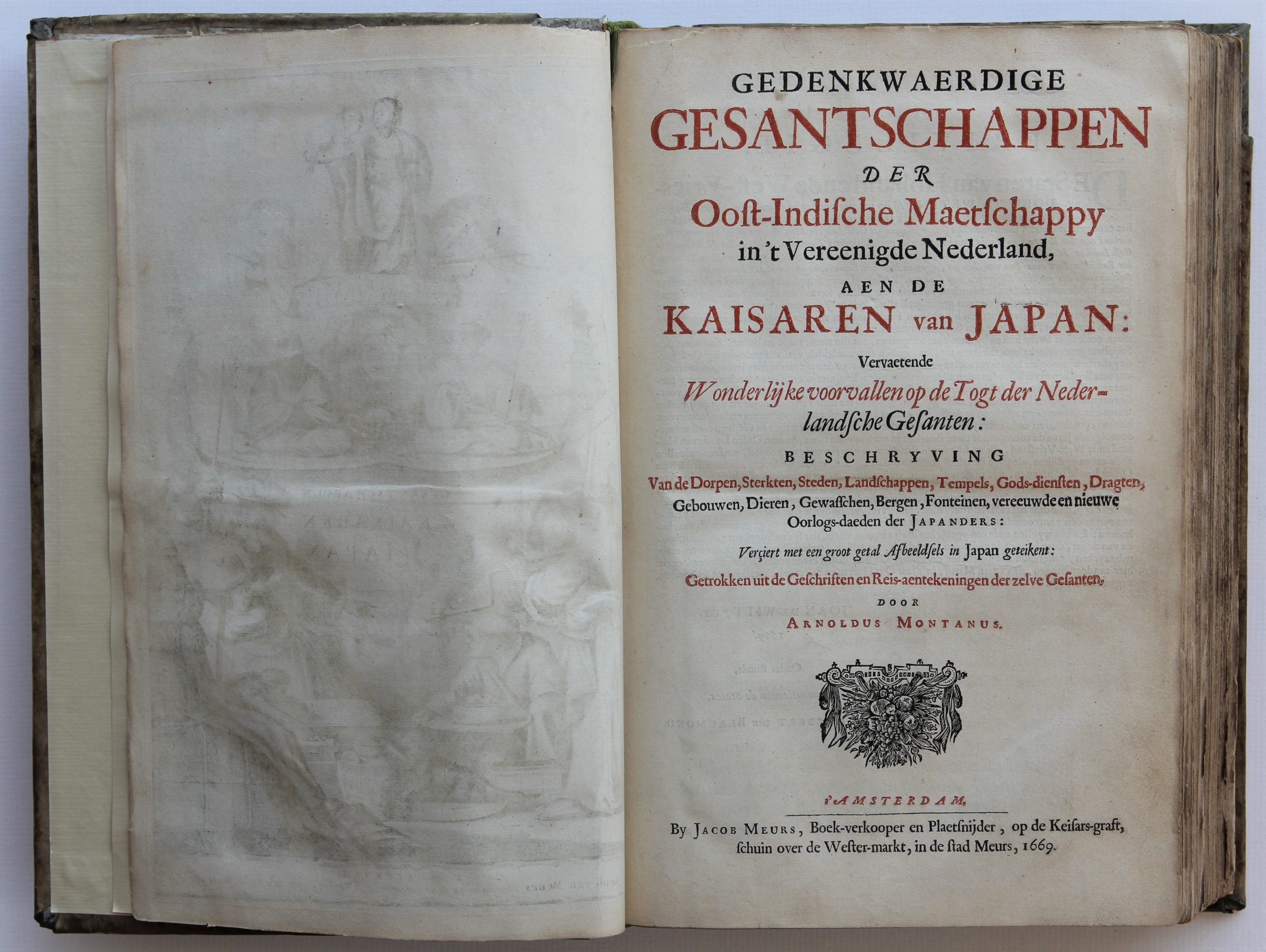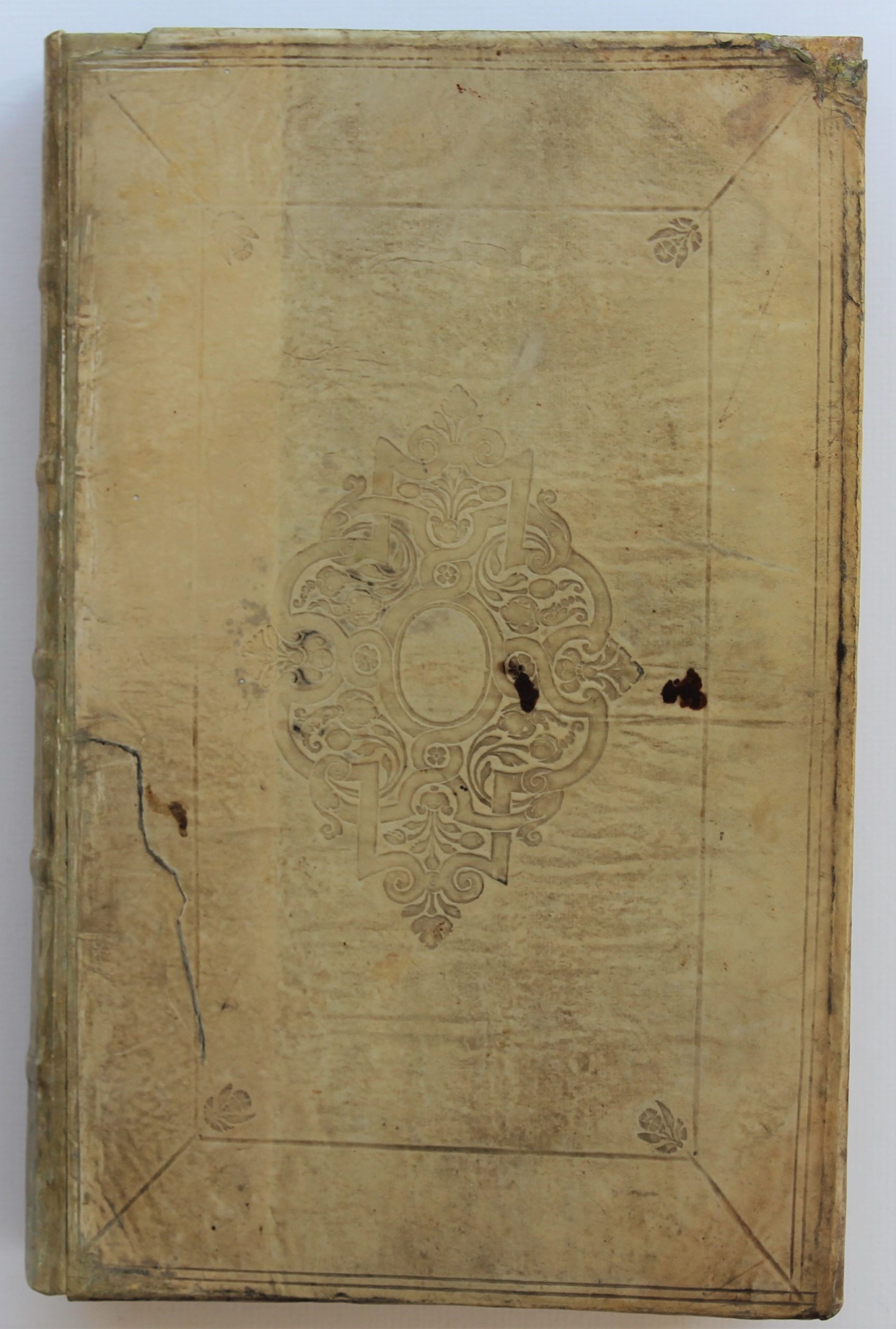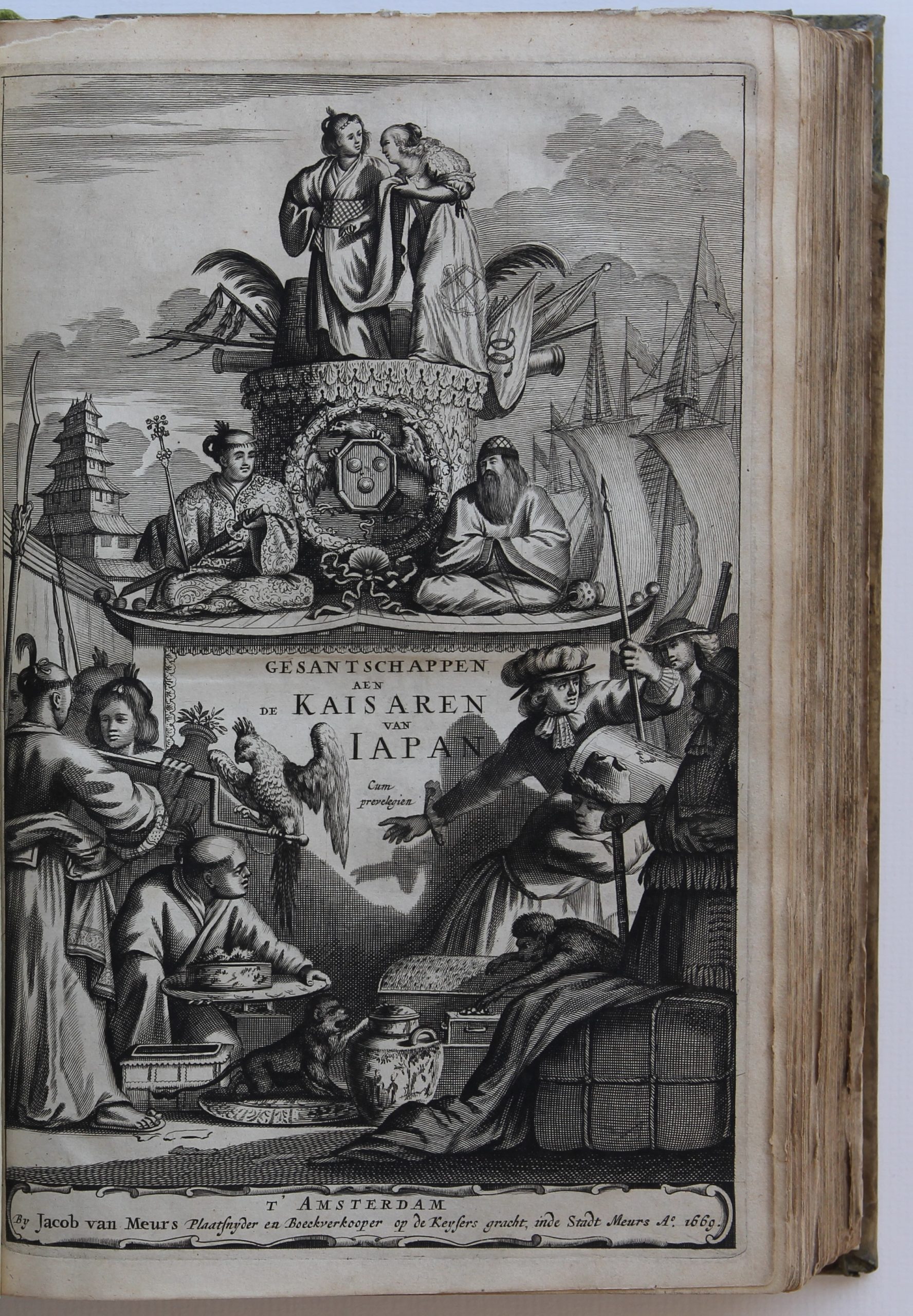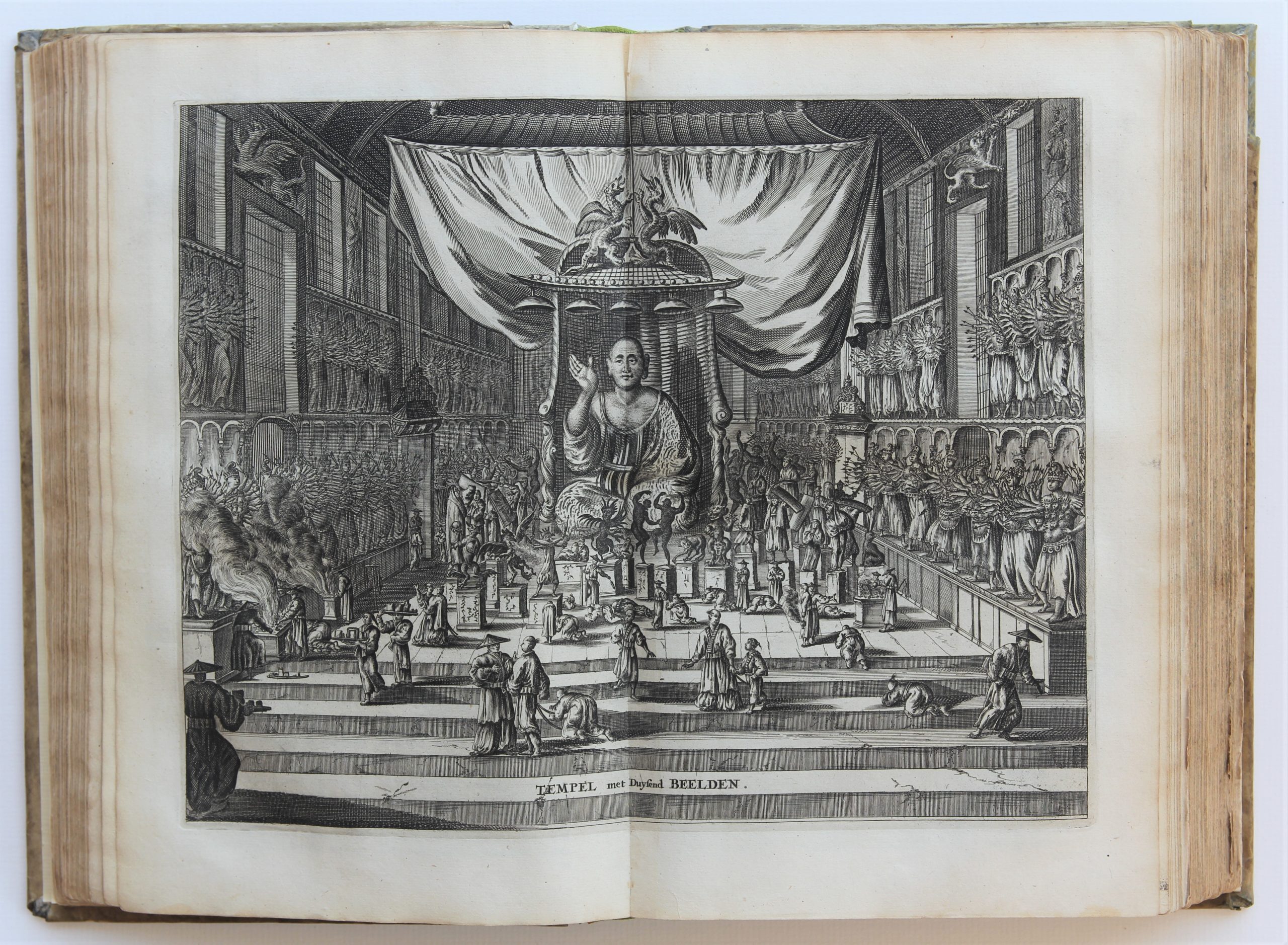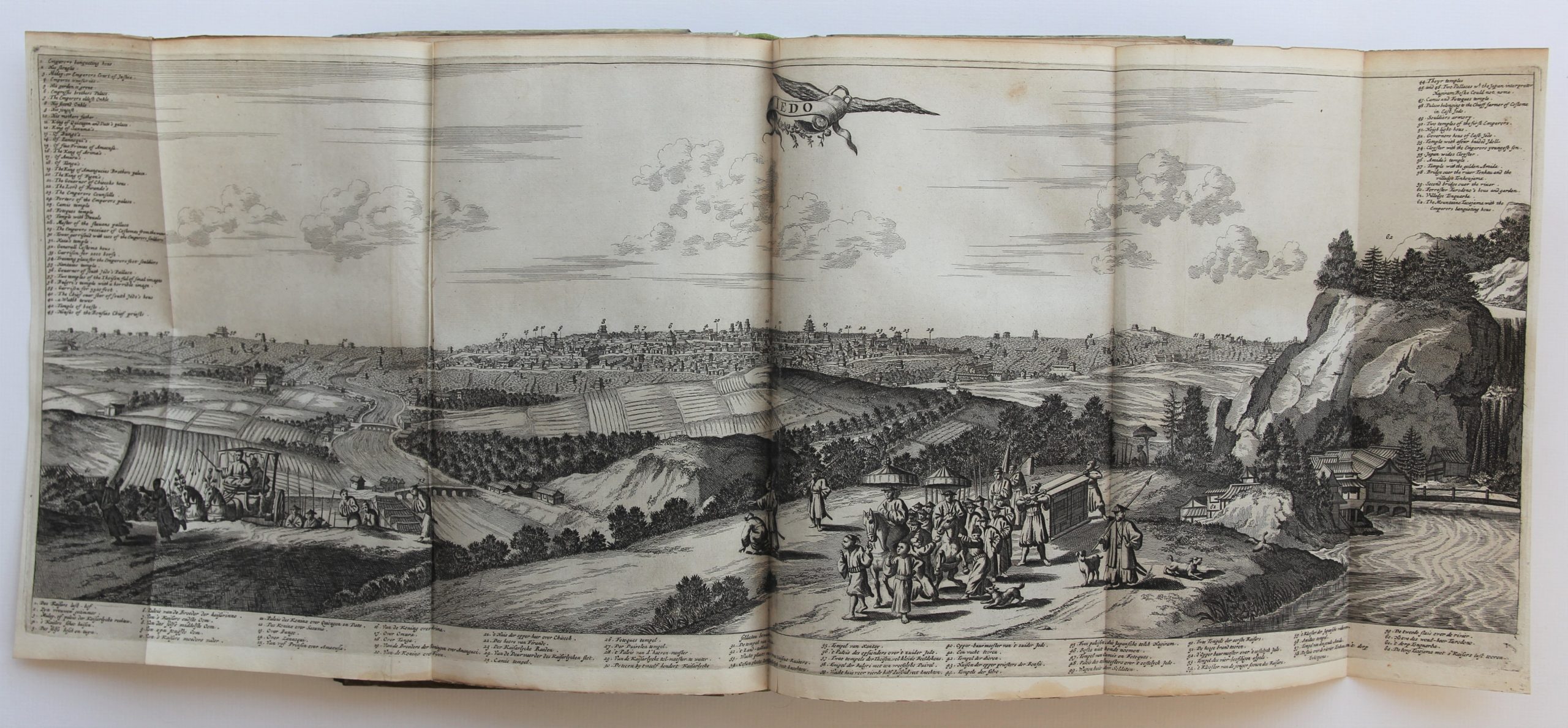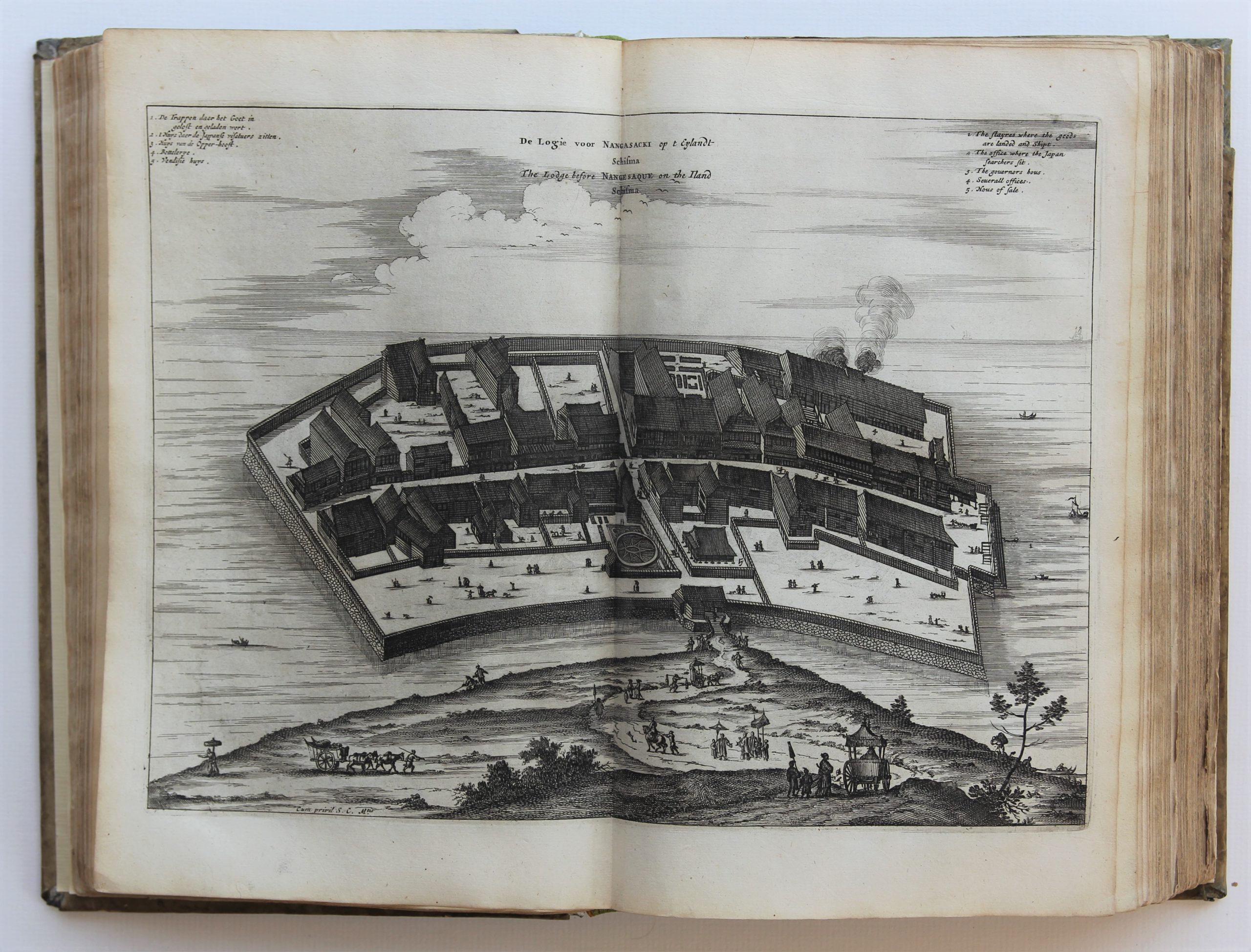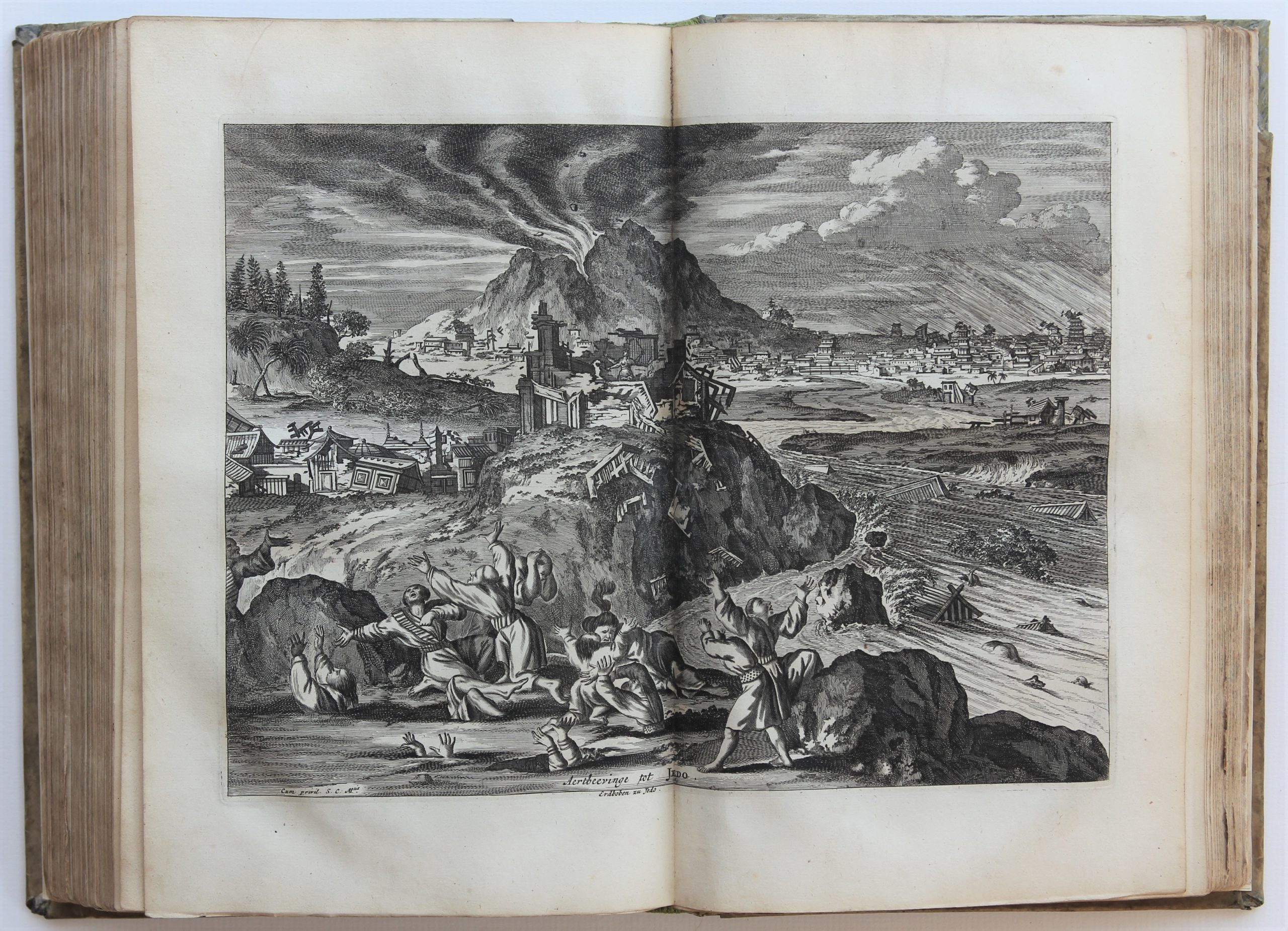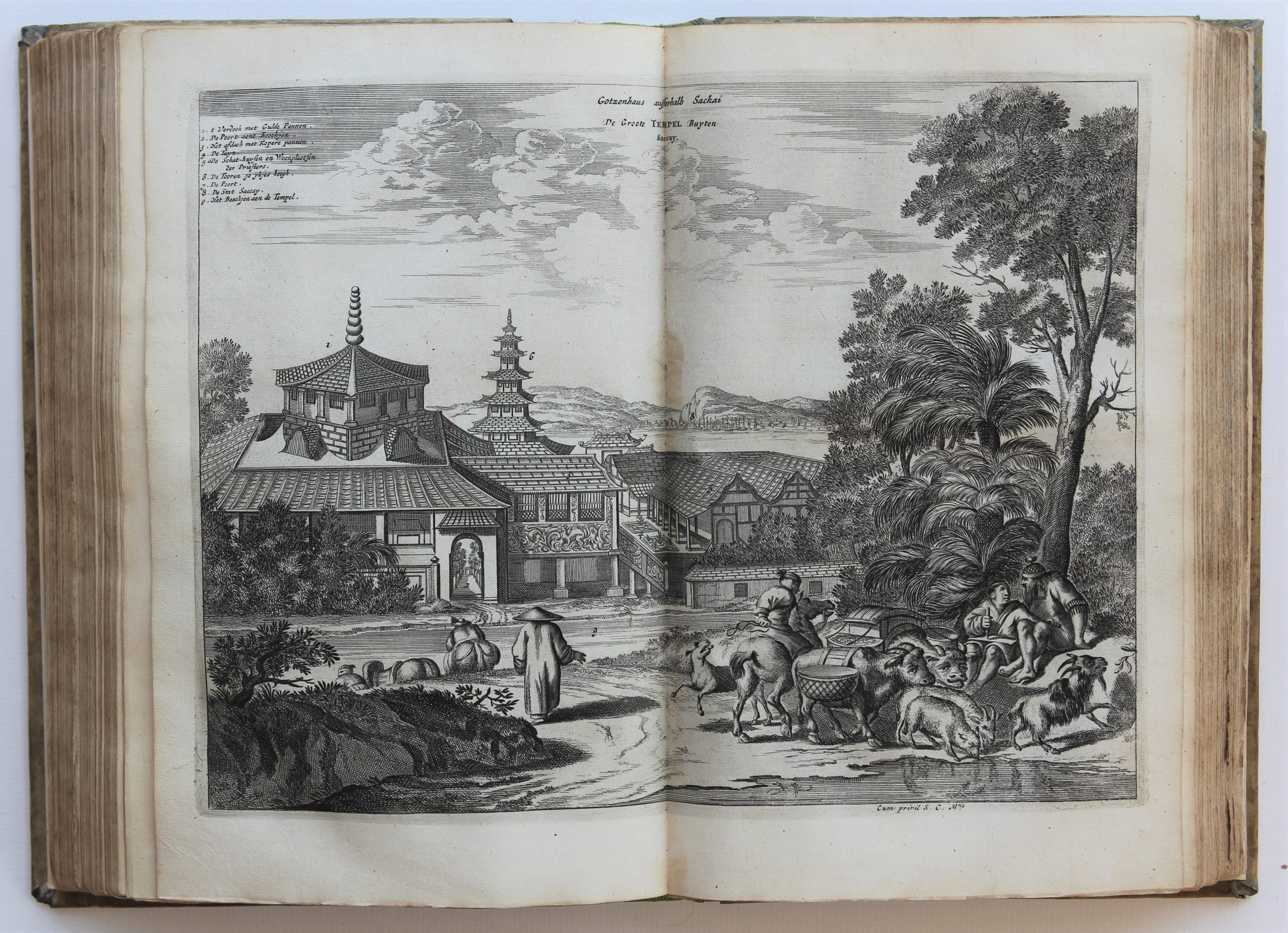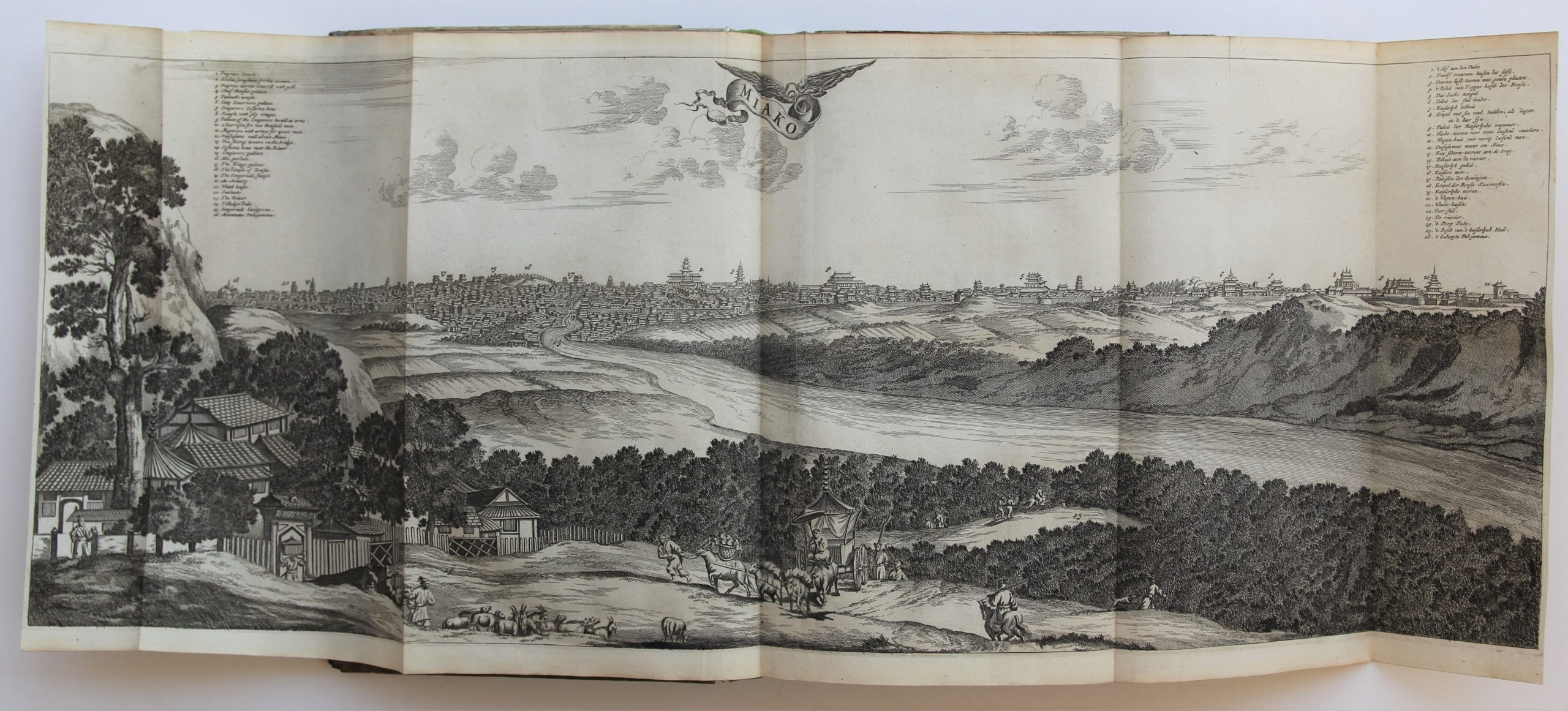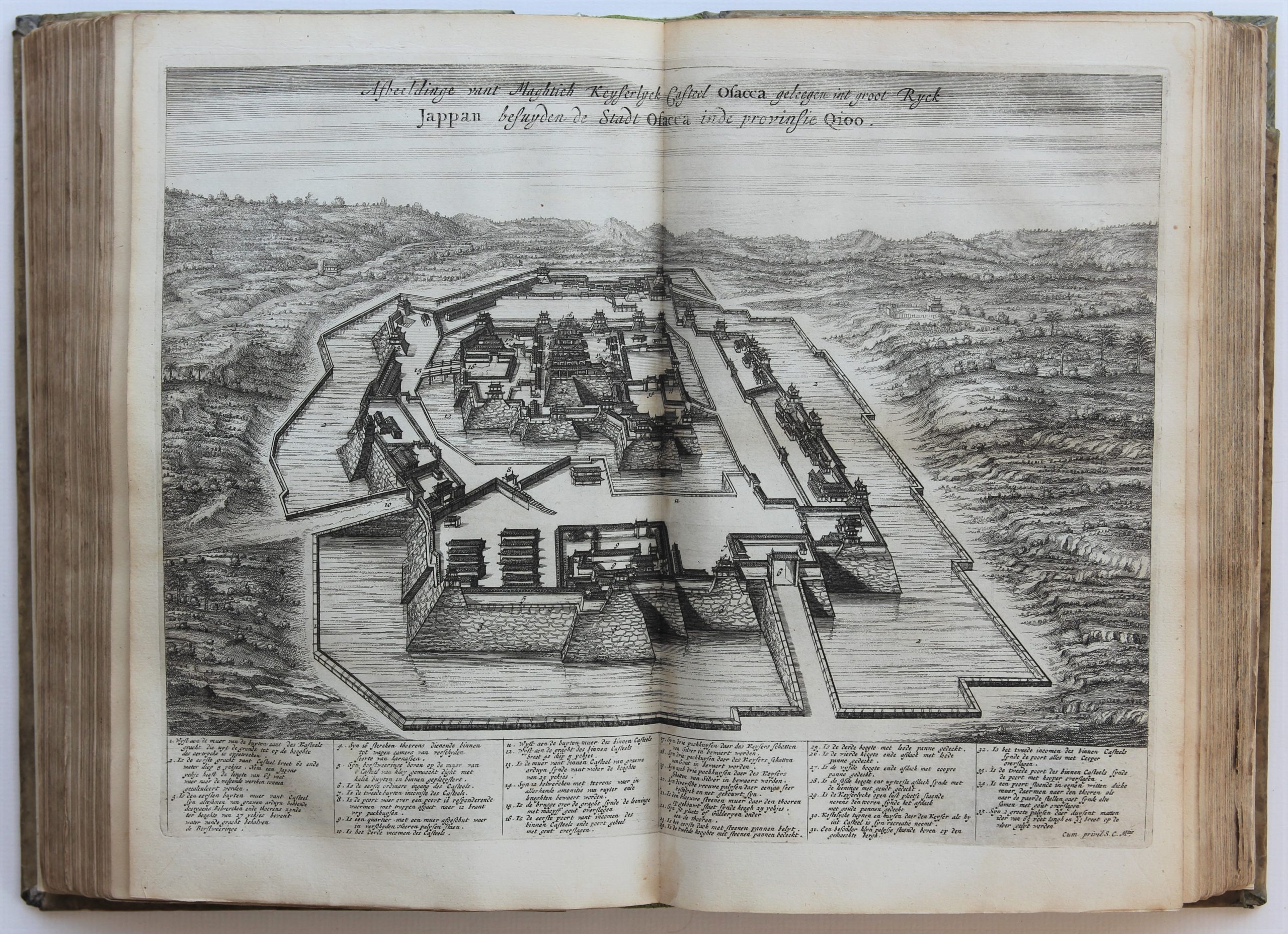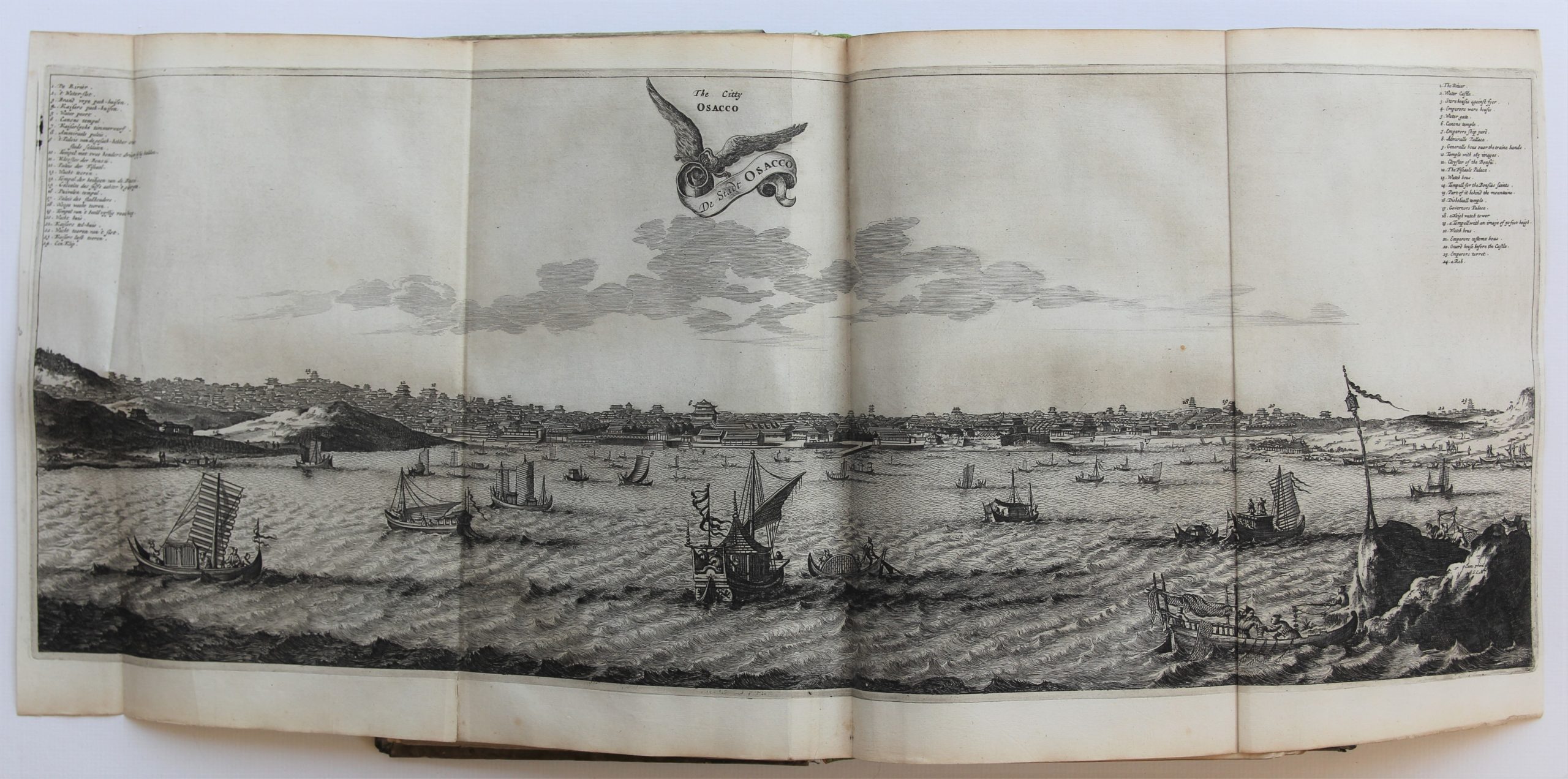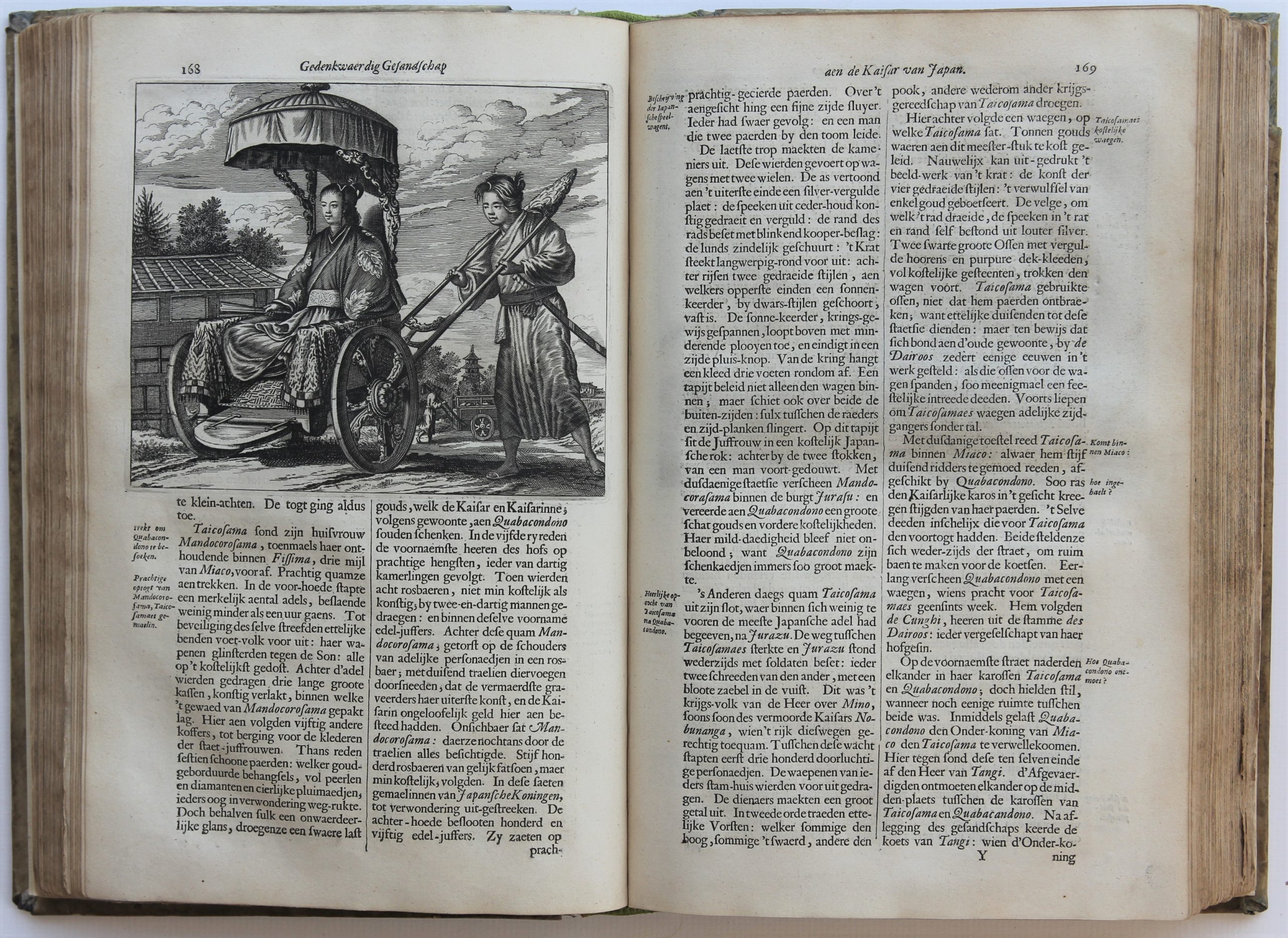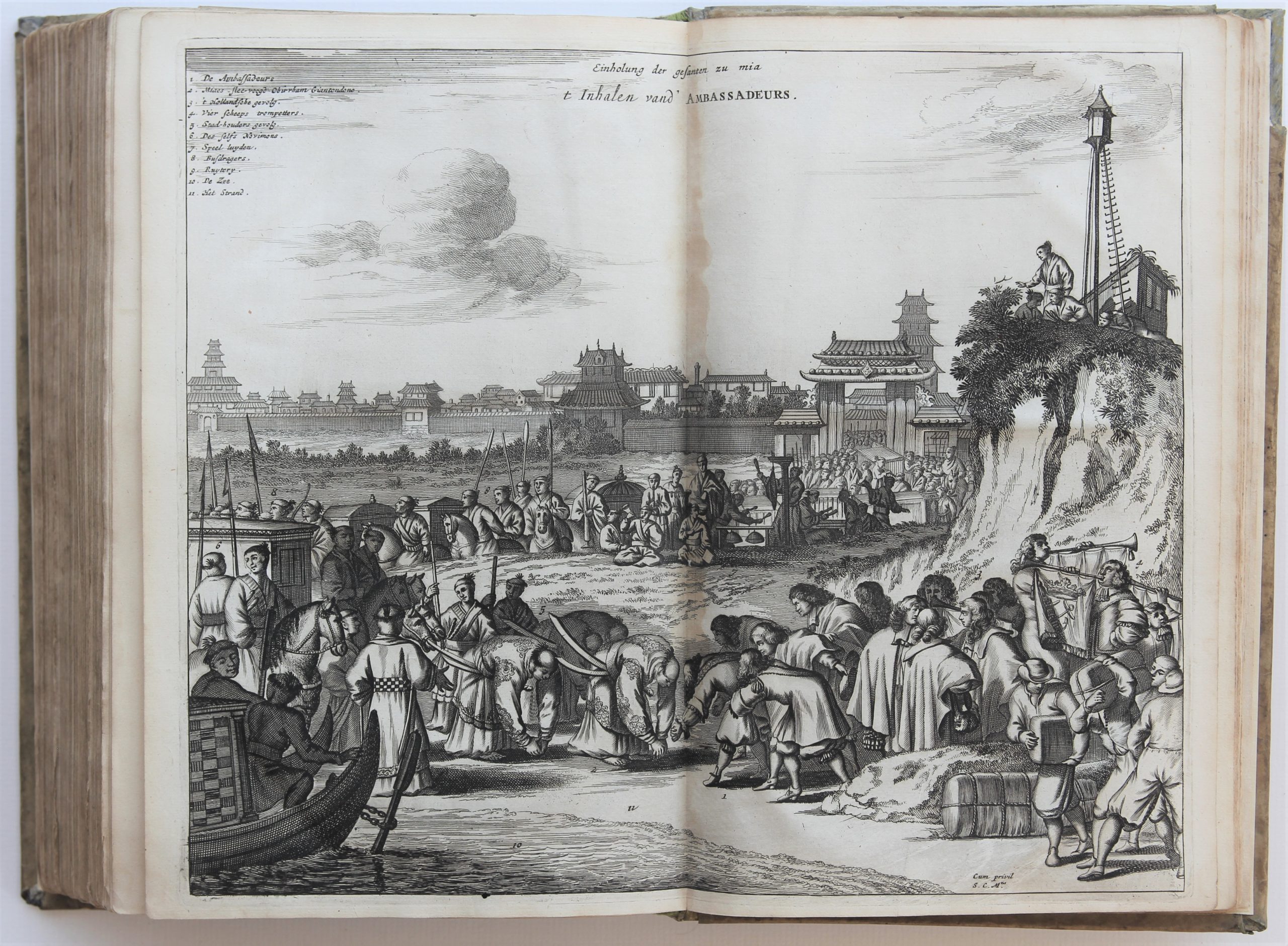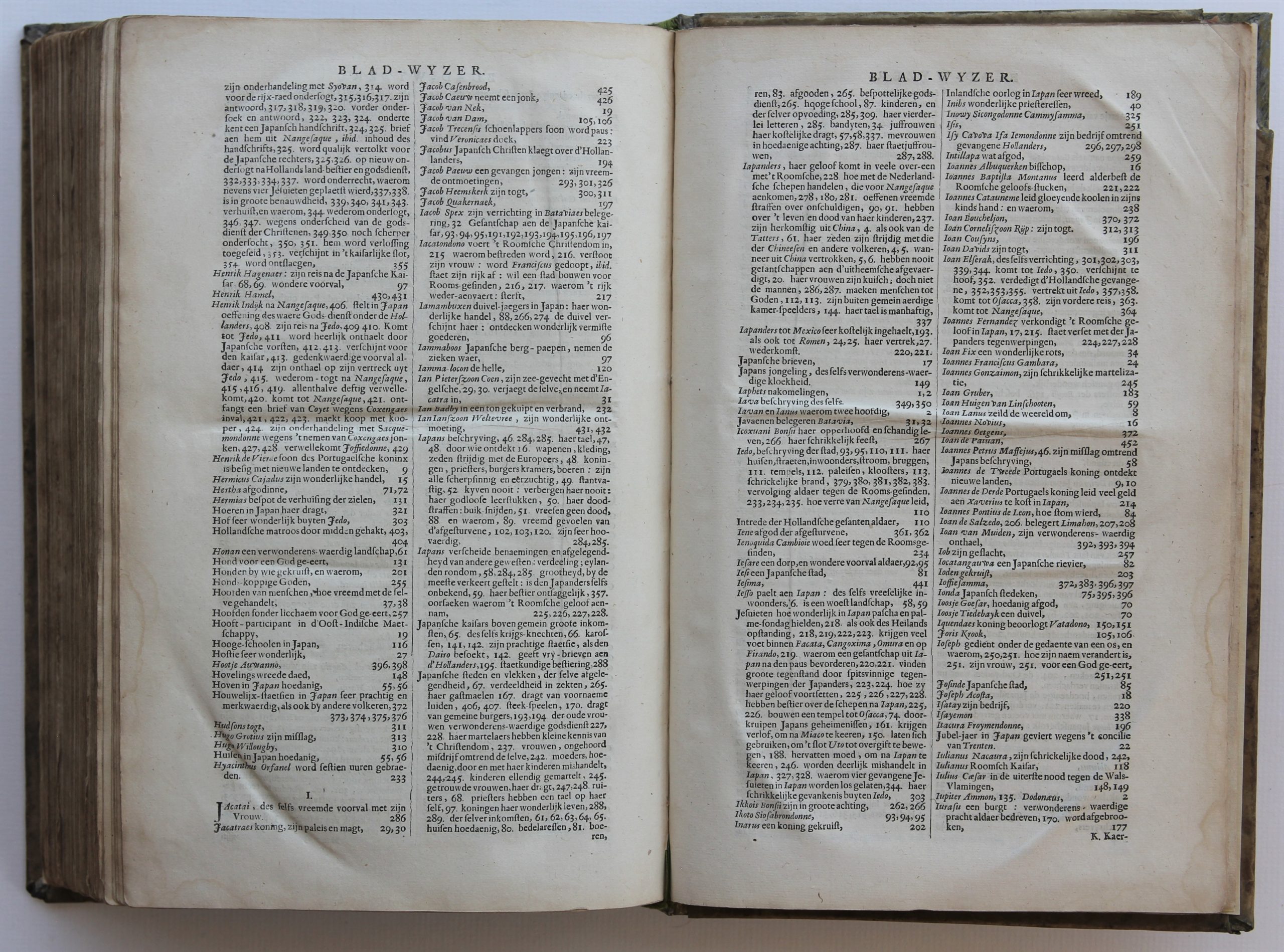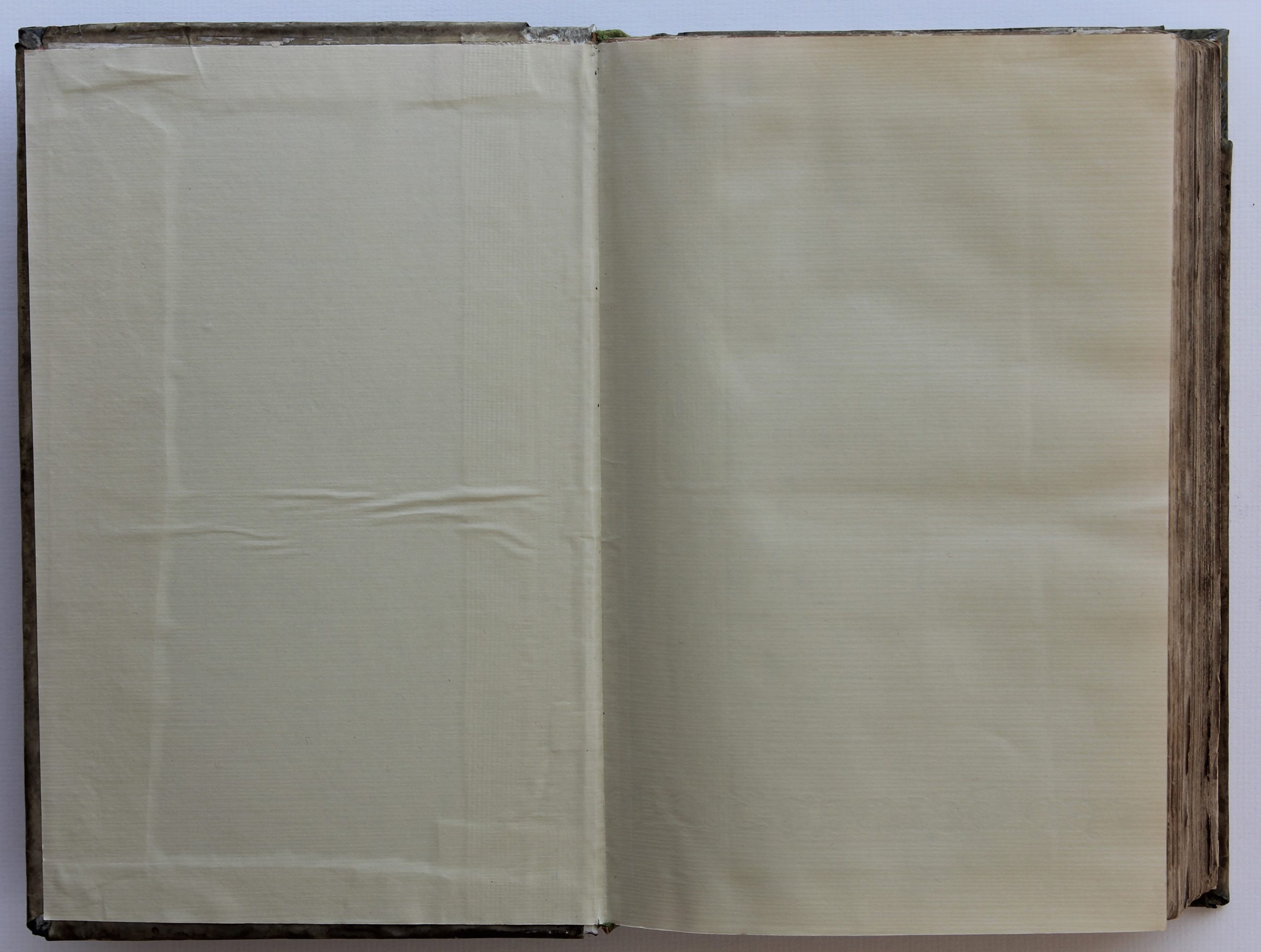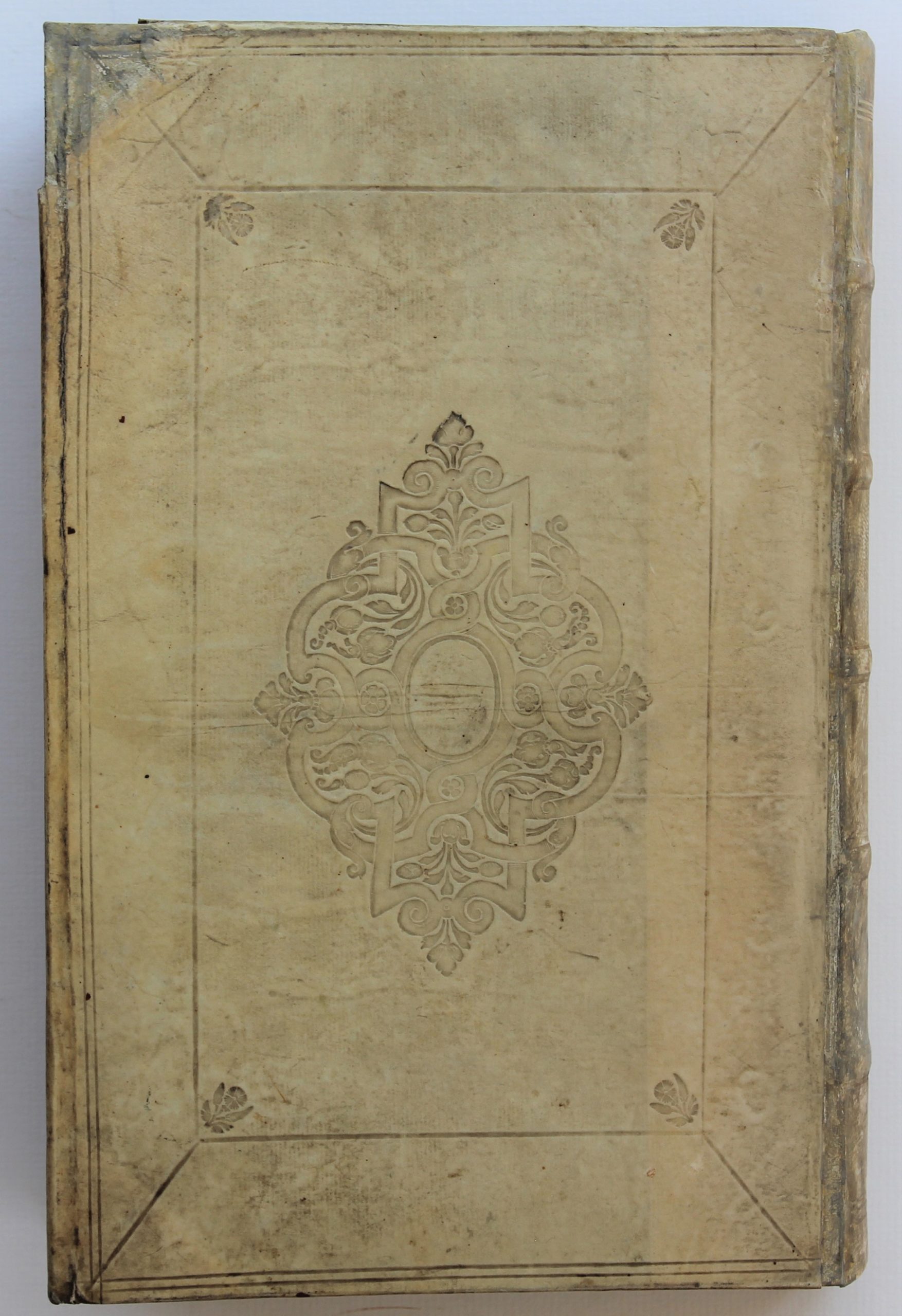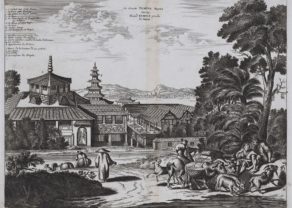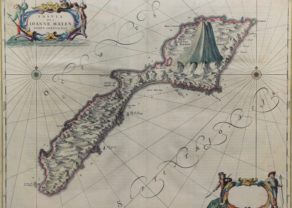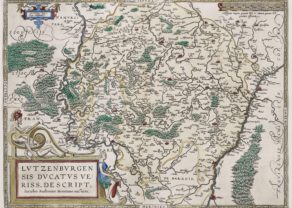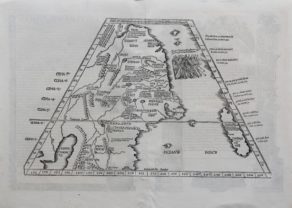Gedenkwaerdige gesantschappen…Japan
A unique and complete document in excellent condition
Detail
- Date: 1669
- In-f°, [8], 456, [14] pp, engraved title, folding map and 24 double or folding plates. With 71 half-page engravings. Small tear without loss in p. 291, very well preserved. Lacking last leaf. Vellum binding, with recuperation of old boards with blind tooling, a few stains, new spine, new end lvs.
- Condition: Very well preserved. Small tear without loss in p. 291. New first and last leaves placed. Vellum binding, with recuperation of old boards with blind tooling, a few stains, new spine, new end lvs.
- Language: Dutch
- Publisher: Jacob van Meurs, Amsterdam
- Reference: Cordier p.385 ; Tiele 762 ; Landwehr, VOC 522 ; Lipperheide Lf1
In stock
Gedenkwaerdige Gesantschappen
The Gedenkwaerdige Gesantschappen, published in Dutch in 1669, is the first major non-Jesuit European work to deal exclusively with Japan Although its author, a Protestant Minister, never left Holland and large parts of his book owe much to Jesuit eyewitness accounts, Montanus was the first to synthesize a Dutch view of Japan, using materials on the country collected by the employees of the Dutch East India Company. (R.H. Hesselink, “Memorable Embassies: the secret history of Arnoldus Montanus’ Gedenkwaerdige Gesantschappen”, 2002).
Indeed, Montanus used four different unpublished manuscripts on Japan written by employees of the Dutch East India Company. These manuscripts seem to have been sold to Montanus or Van Meurs
This is a richly illustrated work on 17th century Japan, with beautiful early views of i.a. Jedo (Tokyo), Miako (Kyoto), Osaka, Kagoshima, Deshima, Batavia, volcano eruptions and a large map of China.
Full title: “Gedenkwaerdige gesantschappen der Oost-Indische Maetschappy in ‘t Vereenigde Nederland, aen de Kaisaren van Japan: Vervatende Wonderlyke voorvallen op de Togt der Nederlandsche Gesanten: Beschryving Van de Dorpen, Sterkten, Steden, Landtschappen, Tempels, Gods-diensten, Dragten, Gebouwen, Dieren, Gewasschen, Bergen, Fonteinen, vereeuwde en nieuwe Oorlogs-daaden der Japanders”
